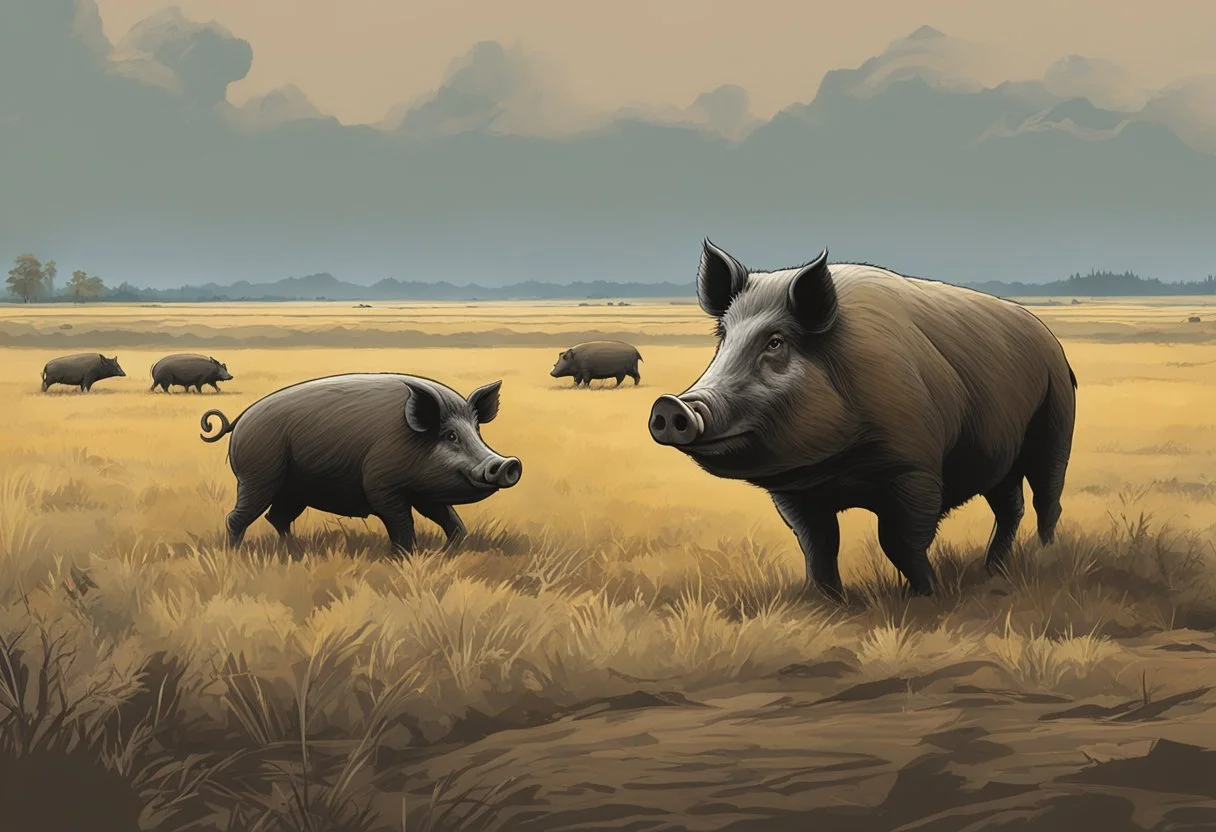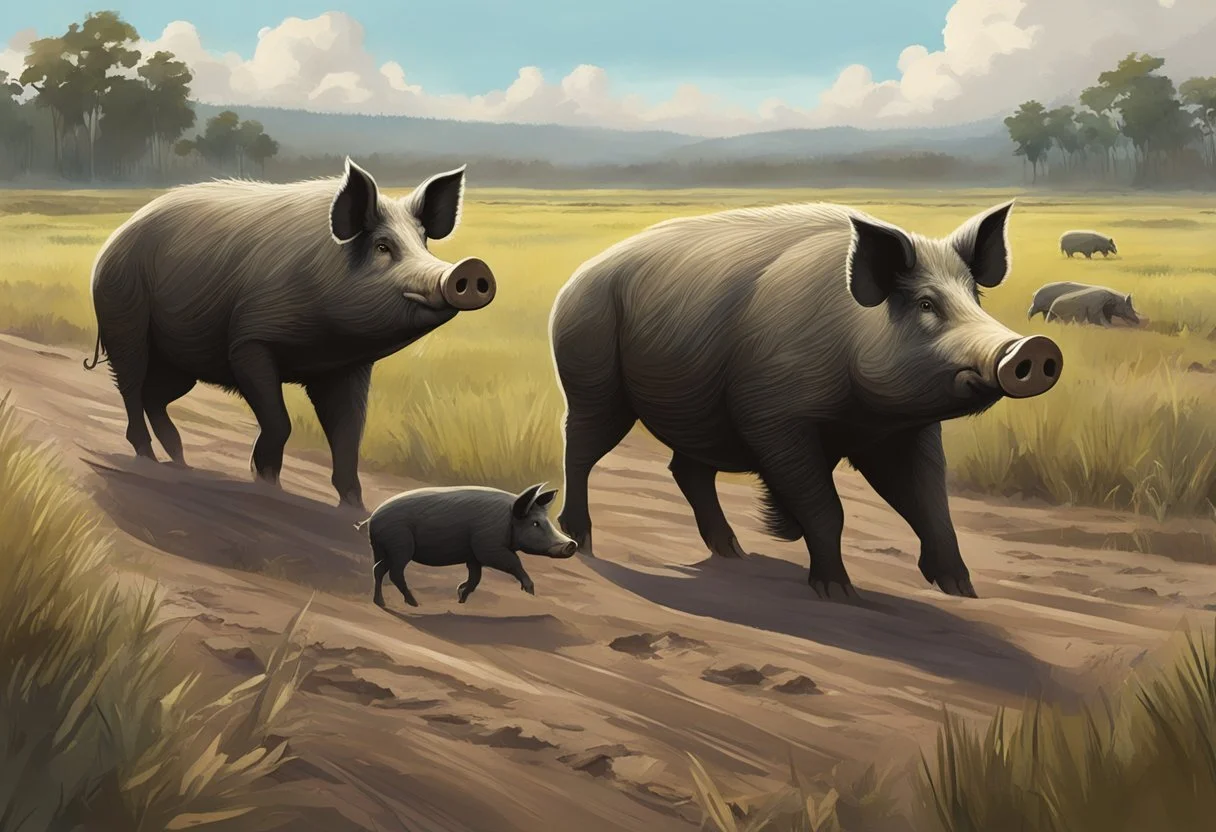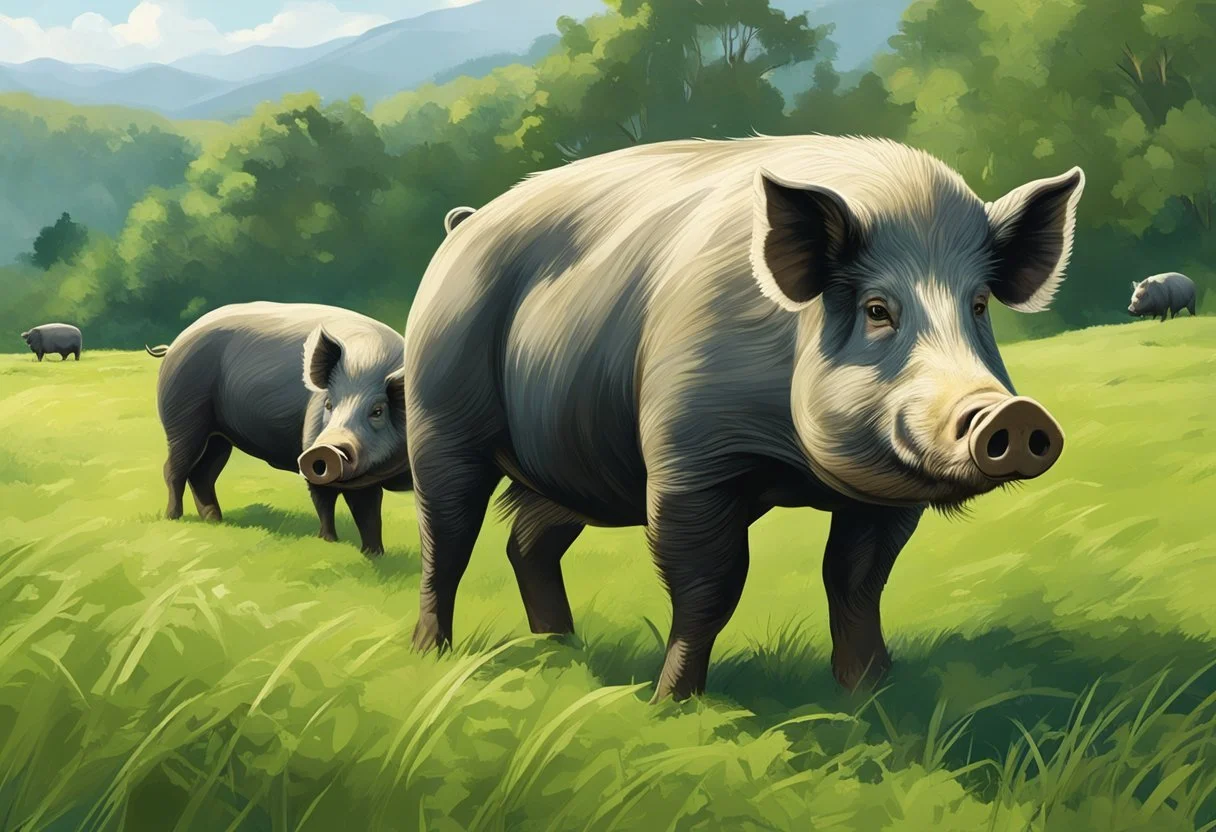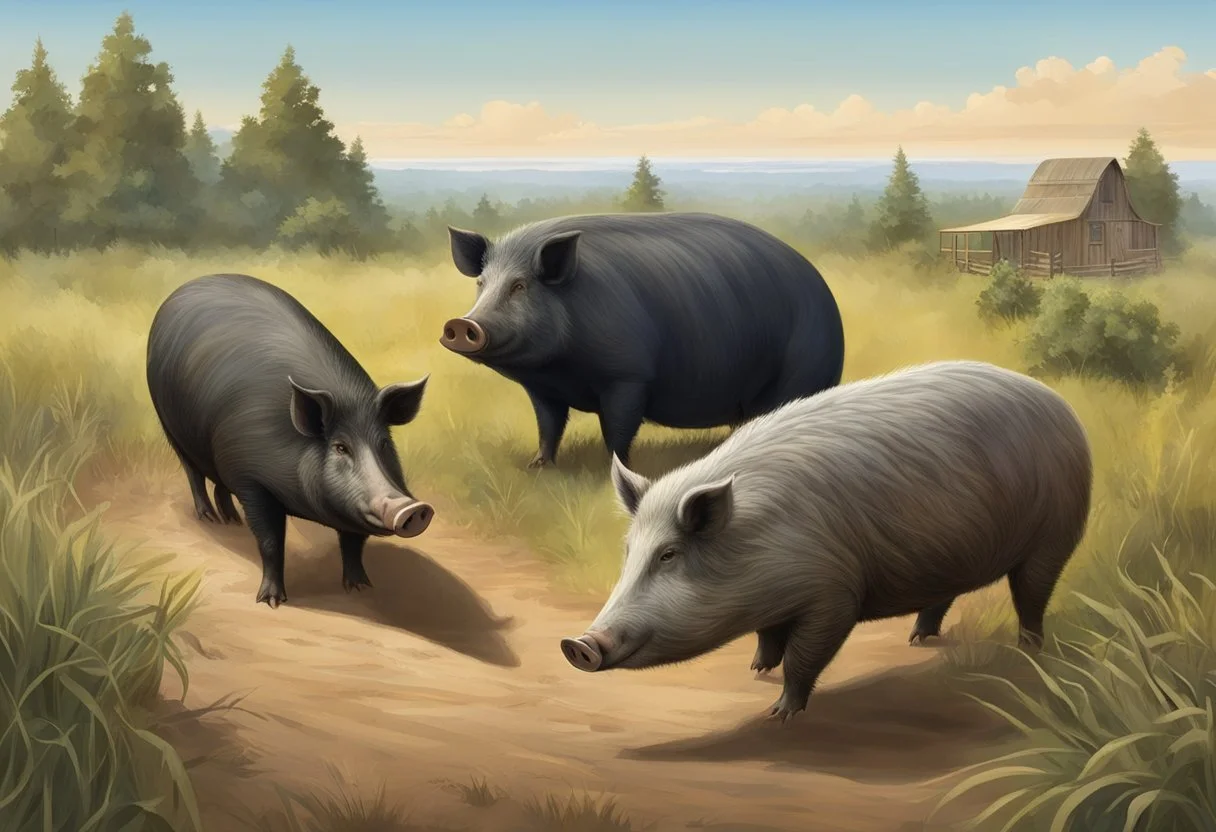Largest Hogs in the World
A Comprehensive Overview
Discover > Texas Outdoorsman > Largest Hogs in the World
The biggest hogs in the world have captured the attention and fascination of many, from farmers and breeders to animal enthusiasts and the general public. These massive creatures, which can sometimes weigh over a thousand pounds, are an exceptional display of the diversity within the animal kingdom. While some hog breeds are consistently sizeable, others achieve their colossal stature through a combination of breeding, nutrition, and environmental factors.
In the attempt to document and understand this remarkable phenomenon, records have documented various instances of exceptional hogs throughout history. Some of these enormous pigs have become an integral part of local folklore and gained recognition around the globe for their astonishing size. This article aims to explore some of the most sizeable hogs recorded in the world and discuss the factors that contributed to their growth.
Mainly domesticated for their meat, hogs are an essential part of agriculture and food production in many countries. Large hogs have practical advantages in terms of offering increased meat yield, while their impressive size has also contributed to their cultural impact and appeal. However, responsible husbandry and balanced breeding practices are essential to ensure the well-being and overall health of these substantial animals, which can sometimes come with their challenges.
Overview of World's Largest Hogs
The world of hogs is diverse and fascinating, with some species reaching remarkable sizes. In this section, we will look at some of the largest hogs found across the globe, including pigs, wild hogs, and the giant forest hog. These animals are members of the family Suidae and belong to various genus and species.
The native domestic pig (Sus scrofa domesticus) is a subspecies of wild boar and one of the largest hogs. Bred by humans for various purposes, these subspecies wild pigs can grow to an impressive size. The largest pig on record, Big Bill, weighed in on a photo at an astounding 2,552 pounds (1,157 kg) when he was shot. However, it should be noted that the beast Big Bill was an exceptional case; most wild pigs do not reach such massive proportions.
In the wild, the wild hogs (Sus scrofa) can also stand out for its size. While not as large as some domestic pigs, an adult male wild hog can weigh up to 660 pounds (299 kg) and measure up to 6 feet (1.8 meters) in length. These creatures are known for their strength, agility, and resilience, making them formidable opponents for predators.
The giant forest hog (Hylochoerus meinertzhageni), the largest member of the wild pig family, is endemic to Africa. Its size can be astonishing; a fully grown male can weigh between 330 and 660 pounds (150 to 300 kg), with a body length reaching 6.6 feet (2 meters).
Here is a brief comparison of the three very largest hogs in the world:
These hogs play important roles in their respective ecosystems. While domestic pigs may have been domesticated by humans for agricultural purposes, wild hogs and Giant Hog of the Forest help regulate plant growth and provide food sources for predators. Understanding their biology, behavior, and size can help us further appreciate these fascinating creatures.
Physical Characteristics
Size and Weight
The Giant Hog of the Forest(Hylochoerus meinertzhageni) holds the title for the largest species of wild pig, with a domestic pig and wild hogs following closely behind. This massive species can reach up to 275 kg (600 lbs) in weight, while wild hogs (Sus scrofa) and a common pig can weigh around 220 kg (485 lbs) and 300 kg (660 lbs) respectively.
Males tend to be larger and heavier than females in all of these species. Giant Hogs of the Forest have males measuring up to 2.1 meters (6.9 feet) in length, while females reach up to 1.8 meters (5.9 feet). In wild hogs, males can grow up to 1.8 meters (5.9 feet) long and females measure around 1.5 meters (4.9 feet).
Distinctive Features
Tusks: One common feature among these large hog species is their prominent tusks. Male Giant Hogs of the Forest and wild hogs have large, sharp tusks that can grow up to 35 cm (14 inches) and are used primarily for digging and fighting. Female tusks are relatively smaller and not as sharp.
Color: While a pig can have a wide range of colors and patterns, wild species such as the Giant Hog of the Forest and wild hogs have more specific coloration. Giant Forest Hogs have a dark, brownish-black color fur often with a white strip that runs down the center of their back. Wild Boars typically have a dark brown or black coat with light-colored bristles.
Body Structure: The Giant Hog of the Forest's body is more compact and muscular compared to its wild hogs and domestic pig counterparts. They have a broad and relatively short head with a high and wide forehead, giving them a distinctive appearance.
Habitat and Distribution
Geographical Range
The biggest hogs in the world occupy a wide range of geographical areas across multiple continents. The Giant Hog of the Forest primarily resides in the dense forests and swamps of Africa, particularly in regions like Ethiopia, Uganda, Kenya, and West, East, and Central Africa. Wild hogs are native to Europe, parts of Asia, including China and Russia, and North Africa. They have been introduced to other regions such as Texas, California, and Florida in the United States. White Warthogs, although less common than their counterparts, also inhabit Africa, mainly in the savannas and grasslands, where they can find dense cover.
Habitat Preferences
Hogs have diverse habitat preferences depending on their species and environmental conditions. The following table provides an overview of the habitat preferences of some of the biggest hogs in the world:
This animal generally prefer environments with dense tree cover, enabling them to hide effectively from predators and find shelter. Areas with low humidity also attract wild hog, as their thick bristles and sparse undercoat suit more temperate conditions.
The habitat selection for these pig species impacts their distribution, influencing where they thrive. The Giant Hog of the Forest is more prevalent in areas with high levels of rainfall and lush vegetation like Africa, while the wild hog and the White Warthog can inhabit more diverse environments, occupying regions in Europe, Asia, Africa, and even parts of the United States.
Behavior and Lifestyle
Social Structure
The biggest pigs in the world, such as the Giant Hog of the Forest and warthogs, exhibit notable social behaviors. These species of pigs tend to live in groups called sounders, which usually consist of a dominant male, several subordinate males, and multiple females with their piglets. The size of the sounder varies depending on habitat and resources.
A distinctive feature of these species is their impressive tusks, which can be used to establish dominance and for self-defense. In the battle for supremacy, males will often engage in aggressive confrontations, which may include charging, grunting, and fighting with their tusks.
Dietary Habits
When it comes to food choices, these large pigs are primarily herbivores. Their diet mostly consists of a diverse range of vegetation, including corn, soy, and other plant-based materials. However, some species may also consume insects and small animals opportunistically.
Warthogs and Giant Hogs of the Forest adapt their feeding habits based on seasonal changes, choosing different types of plants and roots to consume depending on availability. Their ability to digest fibrous vegetation is due to their specialized digestive system, which includes a fermentation chamber that breaks down complex plant material.
Reproduction and Lifecycle
Giant Hogs of the Forest and warthogs are two of the largest pig species found in the world. Their reproductive behavior and lifecycle are fascinating subjects to study for understanding the perpetuation of these mighty species.
Mating and Offspring
Mating Season: The mating season for both the Giant Hog of the Forest and warthogs typically occurs during the rainy season. This timing ensures that there is an ample food supply for the sows, and it's critical for the survival of the piglets.
Behavior: Males, also known as boars, exhibit aggressive behavior during mating season. They frequently engage in fights to establish dominance and gain access to the females. The females, called sows, usually mate with the dominant male in the area.
Gestation Period: The gestation period for Giant Hog of the Forest is around 120-150 days, while warthogs have a slightly longer gestation period of 170-175 days.
Offspring: Piglets are born in well-concealed nests or burrows, providing them with protection from natural predators throughout. Giant Hog of the Forest sows give birth to litters of 1-4 piglets, while warthogs have a larger litter size and can give birth to 2-8 piglets per litter.
Growth and Development: Piglets of both species stay with their mothers for an extended period. During this time, they nurse, learn social structure, and develop the necessary skills for survival. Giant Hog of the Forest piglets stay with their mothers for approximately 6 months before becoming independent, while warthog piglets remain with their mothers for 8-10 months or until the next litter is born.
Life Expectancy: The life expectancy of Giant Hogs of the Forest and warthogs varies depending on their habitat and exposure to predators. Generally, giant forest hogs have a life expectancy of 12-15 years, while warthogs can live up to 15-18 years in the wild.
Human Interaction
Conservation Efforts
Efforts to protect and conserve the largest pig species, such as the Giant Hog of the Forest, have been ongoing and essential for their survival. Various organizations aim to preserve these animals and their natural habitats from threats like the hunters kill and habitat loss. Some key conservation measures include:
Establishing and maintaining protected areas and wildlife reserves to safeguard the habitats of hogs like the Giant Hog of the Forest, warthogs, and the wild hog.
Implementing effective anti-poaching and anti-hunting measures to ensure the safety of these vulnerable species and to stop the hunt of wild stock.
Running public awareness and education campaigns to inform locals and tourists about the importance of protecting these species and their habitats.
Supporting research initiatives to better understand the population dynamics, life cycles, and habitat requirements of these animals, which can help guide effective conservation strategies.
Challenges and Threats
Despite conservation efforts, several challenges and threats continue to affect pig species like the Giant Hog of the Forest, wild hog, and warthogs. Some of the main issues include:
Habitat loss and fragmentation: As human populations expand and forests are cleared for agriculture, logging, and infrastructure development, the habitat available for these species declines, making it difficult for them to find shelter, food, and breeding sites.
Hunting and poaching: Two hunters and more have long hunted wild hog as prey for their meat, hide, and tusks. In some areas, illegal hunting of pigs like the Giant Hog of the Forest and warthog being shot has become a significant threat to their populations.
Human-wildlife conflict: A wild pig often come into conflict with humans when they raid agricultural fields in search of food. In turn, this can lead to intensified hunting and trapping by farmers looking to protect their farm crops.
Disease and predation: A wild pig can be susceptible to various diseases and parasites, which can pose considerable challenges to their survival. Moreover, piglets are often at risk from natural predators such as lions, hyenas, and leopards.
As a result of these challenges and threats, several pig species, including the Giant Hog of the Forest, have experienced population declines and changed conservation status. To ensure the continued survival of these unique and intriguing animals, ongoing conservation efforts and collaboration between governments, conservation organizations, and local communities are essential.
The Biggest Hogs in History
Famous Specimens
Bill was a record-breaking hog, recognized as the largest and heaviest pig ever recorded. This Yorkshire breed animal weighed an astonishing 2,552 pounds (1,157 kg) and measured 9 feet (2.74 m) long. Bill was a big boy and was one of a kind in large animals, holding the title of the world's biggest pig until his death in 1933.
Another notable giant hog is Hogzilla. Originally believed to be a myth, Hogzilla was one of several feral hogs that roamed the woods of Southern Georgia, USA, which a local TV station filmed until its capture in 2004. National Geographic experts said the monster weighed an impressive 800 pounds (363 kg) and measured over 8 feet (2.44 m) long, which Chris Griffin shot. Later examinations confirmed that Hogzilla was a hybrid between feral hogs, a wild Sus scrofa (Eurasian wild boar) and a common pig.
Breed Records
Domestic pig breeds also exhibit significant size variations, with some such as the Yorkshire and Poland China breeds reaching particularly massive proportions. Here are some breed records:
While breeding for size has led to these impressive specimens, it is important to remember that the weight and size of an individual hog depend on various factors, such as genetics, diet, and environment. Remarkable examples like Bill, Hogzilla, and the breed records highlight the incredible potential size of Sus scrofa, both domestic and wild, making them truly the biggest hogs in history.
Wild and Domestic Comparisons
Wild Boars vs Common Pig
The Sus genus, part of the Suidae family, consists of both wild and domestic species, including the wild boar and pig. The wild boar, considered the ancestor of the common pig, differs in appearance and behavior from its common counterpart.
Wild boars are known to have a more aggressive temperament and are often found in the forests and grasslands of Europe, Asia, and Africa. The giant forest hog or big hog is another species within the Suidae family and is considered the largest wild member, with males weighing up to 600 pounds.
Conservation of Wild Species
The conservation status of wild boars and giant forest hogs varies depending on the locale and population dynamics. Many countries have classified wild boars as a species of "Least Concern" due to their adaptability and widespread distribution. However, local populations may be affected by habitat loss, disease, and human activity such as deforestation and hunting.
Giant forest hogs, on the other hand, face more significant threats to their survival. They currently hold a conservation status of "Least Concern," but their populations are declining due to habitat fragmentation and poaching. As members of the wildlife community, it is crucial to address the conservation needs of these wild hog species and protect them from further decline. Efforts such as habitat management, population monitoring, and anti-poaching initiatives can help secure a future for these unique species within the Suidae family.






